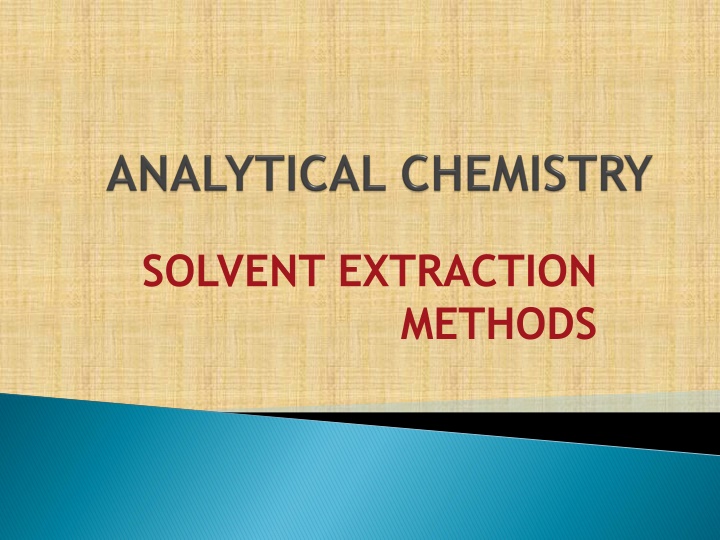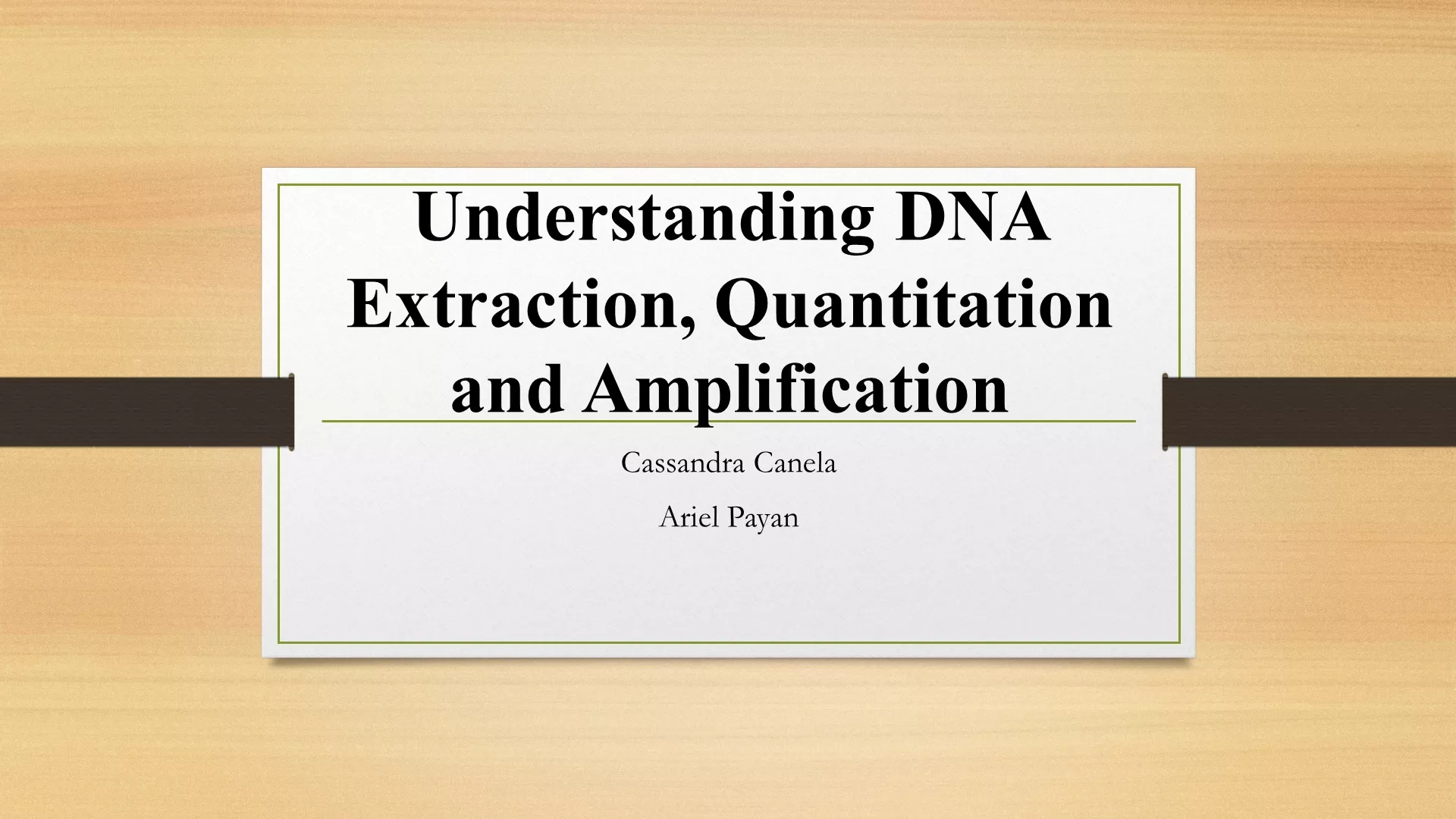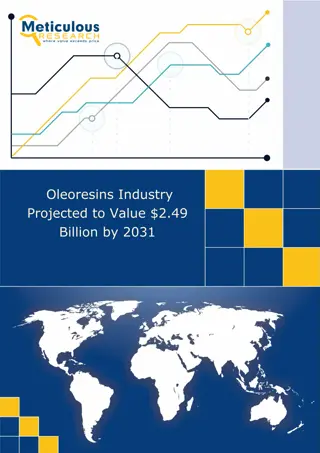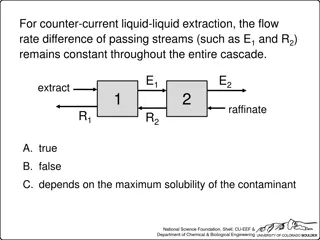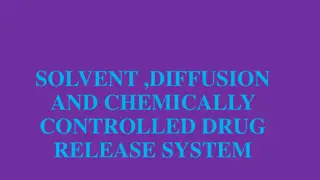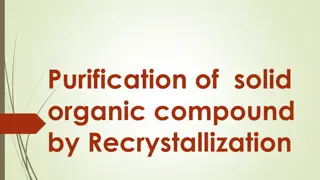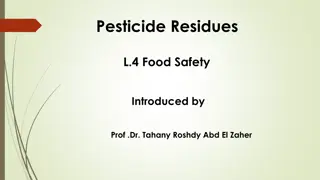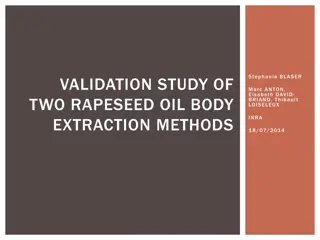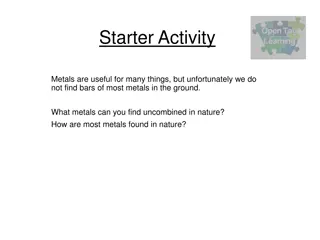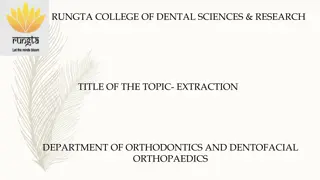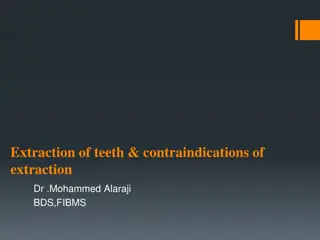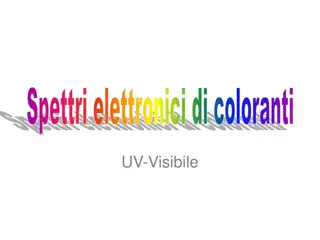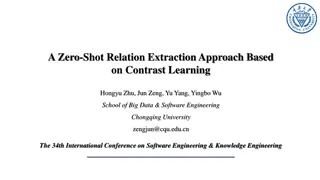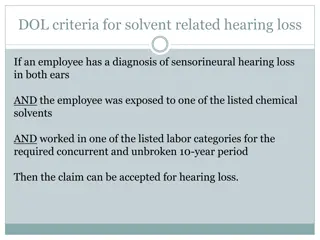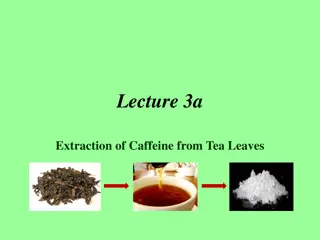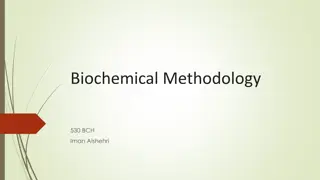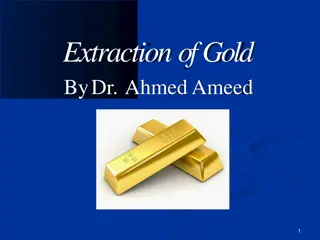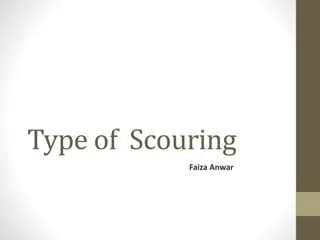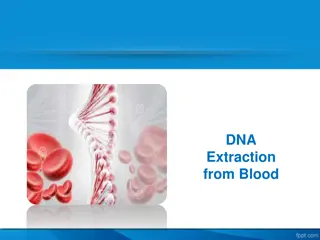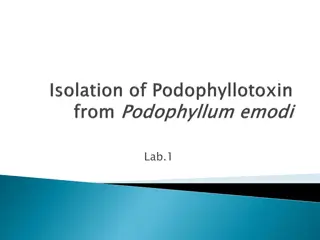Solvent Extraction Methods
Solvent extraction is a method used to separate compounds based on their solubilities in different liquids. This process involves distributing a solute between immiscible solvents, following the Nernst Distribution Law. Discover how temperature limitations and selective dissolution play roles in successful extractions. Learn about the key principles and advantages of solvent extraction techniques.
Download Presentation

Please find below an Image/Link to download the presentation.
The content on the website is provided AS IS for your information and personal use only. It may not be sold, licensed, or shared on other websites without obtaining consent from the author.If you encounter any issues during the download, it is possible that the publisher has removed the file from their server.
You are allowed to download the files provided on this website for personal or commercial use, subject to the condition that they are used lawfully. All files are the property of their respective owners.
The content on the website is provided AS IS for your information and personal use only. It may not be sold, licensed, or shared on other websites without obtaining consent from the author.
E N D
Presentation Transcript
SOLVENT EXTRACTION METHODS
Solvent extraction is a method to separate compounds based on their relative solubilities in two different immiscible liquids, usually water and an organic solvent. It's advantageous to do extraction in successive stages using smaller lots of solvents rather than doing extraction once using the entire lot. Dr. R.H.PARAB 3/8/2025 2
Dr. R.H.PARAB 3/8/2025 3
At constant temperature, a solute distributes itself between two immiscible solvents only in a particular ratio This statement is a Nernst Distribution Law i.e. the law that determines the relative distribution of a component that is soluble in two liquids, these liquids being immiscible or miscible to a limited extent. Dr. R.H.PARAB 3/8/2025 4
This law is one of the laws applying to ideal dilute solutions. It was discovered by W. Nernst in 1890. The Nernst distribution law states that, at equilibrium, the ratio of the concentrations of a third component in two liquid phases is constant. The law may be expressed in the form c1/c2= k where c1and c2are the molar equilibrium concentrations of the third component in the first and second phase, respectively; the constant k is the distribution coefficient, which is temperature dependent. Dr. R.H.PARAB 3/8/2025 5
The Nernst distribution law permits us to determine the most favorable conditions for the extraction of substances from solutions. If the dissolved compound in one of the solvents can associate, the number of molecules becomes half. The ratio c1/c2 is not temperature. stable at constant Dr. R.H.PARAB 3/8/2025 6
Temperature Limitations Molecular state of the solute is same Dilute solutions Solvents are mutually insoluble Dr. R.H.PARAB 3/8/2025 7
Extraction depends on the process of selective removal of one or several components from a mixture of liquid or solid samples with an organic solvent known as EXTRACTANT. Extraction of solids with a liquid is also known as SELECTIVE DISSOLUTION. Dr. R.H.PARAB 3/8/2025 8
Chemical nature of substance being extracted. Nature of solvents. Temperature DISTRIBUTION COEFFICIENT D is the ratio of total concentration of all species of the solute in one solvent to the total concentration of all its species in the other solvent. Dr. R.H.PARAB 3/8/2025 9
In these separations, the advantage is taken of the fact that the distribution ratio of most inorganic substances is in the favour of water, while those of organic compounds is in favour of organic solvents Sometimes , the distribution ratio can be increased in the desired direction by adding another compound which decreases the solubility of the substance being extracted in the original solvent. Dr. R.H.PARAB 3/8/2025 10
It is very easy to show that with a given volume of extracting solvent available, the extraction is more complete, if it is used in several operations than if it is used all in one operation. In the first extraction 66.7% solute is extracted and in second extraction 88.9% is extracted. Hence, in solvent extraction it is advantageous to use a given volume of the extracting solvent in small amounts in successive stages rather than in one whole at a time. Dr. R.H.PARAB 3/8/2025 11
A good extracting liquid must have: High distribution ratio for the solute Low solubility in aqueous phase Low toxicity and inflammability Low viscosity Density difference Dr. R.H.PARAB 3/8/2025 12
Selective Chemically inactive Cheap Blast resistant Low oxidizability Easy to recover Dr. R.H.PARAB 3/8/2025 13
Types of Extractants Lighter than water Heavier than water Dr. R.H.PARAB 3/8/2025 14
Proper choice of extractant Adjusting pH Regulating temperature Masking interfering ions Changing concentrations Duration of extraction process Effect of processes Dr. R.H.PARAB 3/8/2025 15
Salting out agents Oxidation state pH value Masking agents Synergistic agents Modifiers Dr. R.H.PARAB 3/8/2025 16
Batch extraction Continuous extraction Large distribution ratio for the desired separation is readily available Distribution ratio is low Given volume of a solution containing the ion under analysis is shaken with a given volume of the organic solvent in separatory funnel Continuous flow of immiscible solvent through the solution to be extracted Micro as well as macro pear type separatory funnels are available Removal of extracted solute from the organic phase for further preparation for the detailed analysis is called STRIPPING Impurities present in organic phase may be removed by BACK WASHING Dr. R.H.PARAB 17 3/8/2025
It is asssumed that 1.No effect of solvation 2.Reagent and metal complex salt exist in both phases. 3.Solute very low concentration and are uncharged molecules. The distribution of metal in a given system is a function of pH alone. Dr. R.H.PARAB 18 3/8/2025
High ideal behaviour Ideal behaviour Non-ideal behaviour Dr. R.H.PARAB 19 3/8/2025
Ionic extractant Chelating extractant Inert solvent TYPES OF EXTRACTION SYSTEMS Acidic extractant Basic extractant Dr. R.H.PARAB 20 3/8/2025
TYPES OF INORGANIC EXTRACTION SYSTEMS Ion-association system Chelate system Dr. R.H.PARAB 21 3/8/2025
Organic substances inorganic substances with covalent bond Ion pairs Solvated compounds Chelates Dr. R.H.PARAB 22 3/8/2025
Low time More complete separation of ions Increase in sensitivity Extractant selected helps in removal and separation of substances. Separation combined with quantitative determination. Extract contains more stable compound. Low temperature and automatic Selectivity of reactions can be increased. Dr. R.H.PARAB 23 3/8/2025
Useful in Analytical process 1.Determination of Fe as 8-hydroxy quinolalate 2.U as 8-hydroxy quinolate 3.Ni as dimethyl glyoxime complex 4.Iron chloride extractions 5.Pb by dithiozone method 6.Cu as diethyl dithiocarbamate complex 7.Cu as neo cuproin complex 8.Be as acetyl acetone complex 9.Mo by thiocynate method Dr. R.H.PARAB 24 3/8/2025
1.Extraction of metal from leach liquors obtained from complex ores. 2.Separation of metals that are difficult to be separated by pyro and hydro-metallurgical techniques. 3.Purification in order to obtain a very pure starting material for further metallurgical processing. e.g uranium, lanthanides,tantalum,zirconium and thorium nitrate Dr. R.H.PARAB 25 3/8/2025
1.Discontinuous infusion type extractor Soxlet apparatus is used 2.Continuous infusion type extractor In this extractor the substance is placed on sintered glass plate. Apparatus is available commercially. The separation of lithium chloride from sodium and potassium chlorides may be carried out by making use of n-butyl alcohol because only lithium chloride is soluble in n-butyl alcohol. Dr. R.H.PARAB 26 3/8/2025
